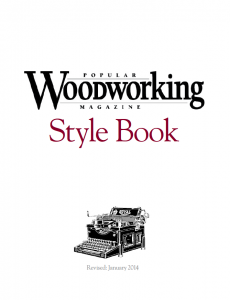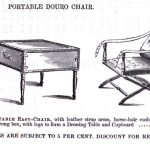We may receive a commission when you use our affiliate links. However, this does not impact our recommendations.
 Most of you should probably stop reading right now. What follows will be of interest only to those who: read the dictionary for fun; keep notebooks handy for jotting down odd and interesting words and definitions; memorize large swathes of the AP, MLA and Chicago style books (because why wouldn’t you?!); and take pride in knowing how to properly spell Volkswagen and the “Procter” in Procter & Gamble…in other words, to oddballs like me.
Most of you should probably stop reading right now. What follows will be of interest only to those who: read the dictionary for fun; keep notebooks handy for jotting down odd and interesting words and definitions; memorize large swathes of the AP, MLA and Chicago style books (because why wouldn’t you?!); and take pride in knowing how to properly spell Volkswagen and the “Procter” in Procter & Gamble…in other words, to oddballs like me.
So, for the handful of those who’ve requested it, I’m sharing the Popular Woodworking Magazine style book (download the pdf below). Note that it won’t tell you why we use the British spelling of moulding, just that we do.
To be fair, I know that a lot of you pay attention to these sorts of things…because you are always quick and happy to point out my nasty and apparently unbreakable habit of neglecting to key in the article “a” when it belongs in a sentence. You’ve also noticed that, with the exception of in a certain former editor’s articles, we now use the word “of” after “couple.”
I have, however, made one (I thought) fairly sweeping style change upon which no reader has commented; it is apparently a pet peeve uniquely mine – unlike “couple of.” I’ve a hardcover copy of “Handsaw Essentials” for the first person to correctly note it below – and no asking for hints from staff members or former staff members, all of whom have seen me mark it a countless number of times. But here’s a hint from me: the edit involves either three letters or four, depending on what is excised. (It is possible, I suppose, that no one has noticed or cared…in which case my little decade-long crusade has indeed been proven pointless and I’ve wasted a good deal of ink.)
Here are some supplies and tools we find essential in our everyday work around the shop. We may receive a commission from sales referred by our links; however, we have carefully selected these products for their usefulness and quality.










One omission I discovered in the style manual is the use of “either” to mean “both,” as “on either side of …” While it may be a somewhat common usage in casual conversation, when something is being constructed, it is important to know whether the job, item, etc. will exist once or twice. Sometimes the intent is fairly obvious, but I have encountered instances (fortunately only one in FFW comes to mind just now) when I had to examine the drawings and photos to be sure what the writer meant. To avoid the possibility of such confusion, “either” should not be used when the writer really means “both.”
Megan – You are a breath of fresh air in the magazine business. Since Bill Safire’s column is no longer it is so great to have you keeping up the standards. Now if we could only tone down those sappy cover headlines.
As a professional oddball, I must take issue with the stylebook’s rule on electrical units (220v, for example).
This SI unit is named after Alessandro Volta. As with every International System of Units (SI) unit whose name is derived from the proper name of a person, the first letter of its symbol is upper case (V). However, when an SI unit is spelled out in English, it should always begin with a lower case letter (volt), except in a situation where any word in that position would be capitalized, such as at the beginning of a sentence or in capitalized material such as a title. Note that “degree Celsius” conforms to this rule because the “d” is lowercase. —Based on The International System of Units, section 5.2.
Megan,
I thank you and all the responders for this most informative series. Although I can usually put together a few lines of text somewhat accurately, I realized the difficulty in properly educating our children in proper English here in eastern Pennsylvania. Whether or not it was the Pennsylvania Dutch or some other factor, I could never tolerate skipping key words in a sentence. For example, my children would often say, “IM done my homework”. “Are you kidding me”, I would say. What happened to the word with? There were many other examples. In short they both attended college, majored in English and now speak quite well in polite company.
Please remain diligent. Also please send me a copy of the book as well. I deserve it!
Thanks in advance,
Tim
After reading the comments I know that my entry isn’t correct, but may I congratulate you in using “I’ve” as in “I’ve an idea”, instead of “I’ve got” or “I have”. I know this misuse is an Americanism that has become the rule due to continual misuse, but, nonetheless, your publication always takes the high ground. Thanks for not offending the sensibilities of the 5 of us.
I can almost see you putting on your schoolmarm clothing and using a wooded ruler to slap the knuckles of the writers and contributors that do not follow the style book. LOL
OK, Megan, maybe you can help me with an English conundrum. What is the proper use of will, shall, should, and would. Just to keep this about woodworking; if you wood (will?) keep your would working tools sharp you will (shall?, should? would? ) find life in the shop more fulfilling. How much would wood a would chuck chuck if a woodchuck had dull teeth?
I would have made this funnier if I could.
Maybe next time I will.
You know I should and probably would
I shall certainly try then engrave it in wood.
The so-called rules of English are based in Latin. The vocabulary is — well — mixed, to say the least. As such, they often cancel each other out.
To slavishly insist that the latter must conform to the former is to place it in a metaphorical straightjacket from which it will always attempt to escape; thus perpetuating the inventiveness, contradictions and conflicts for which it is (in)famous.
In other words, stop obsessing.
Because Popular Woodworking undoubtedly has numerous English majors on its payroll, all of whom would cringe at my butchery of the English language, I hesitate to point out the two spelling errors that I found on the last page of Style Book: subhed and sentenec.
All of these language rules fascinate me, even if they are confusing and nearly incomprehensible at times. I’m glad that someone keeps track of and codifies them for us.
Is it the use of the prefices pre and post, such as pre-Industrial Revolution or post-WWI?
Just a guess–could it be “and then”?
Only APA for me. I have done nothing but vomit APA all over paper for the past 4 years.
I think you are a time-sensitive aoul so I think it is ‘We use “since” when we mean “because.”’
Love the style book; must need therapy!
I wanted to build the case with dadoes, BUT I used a BUTT joint instead. BUTT, I thinks the BUT joint will work as well. 🙂
Delighted to see your ruling on ‘which’ – I’ve been fighting that battle for more than 30 years. Think you’re wrong on ‘since’, though. Perfectly acceptable as a synonym for ‘because’ – even Shakespeare did it :D.
Is it the use of the words “saw” and “sawn”?
How are we supposed to know what it is if you’ve already fixed it?
Is your middle name really “Steve” ? 😛
This one fits the bill: We incorrectly use “over” when we mean “more than” and “under” when we mean “less than.”